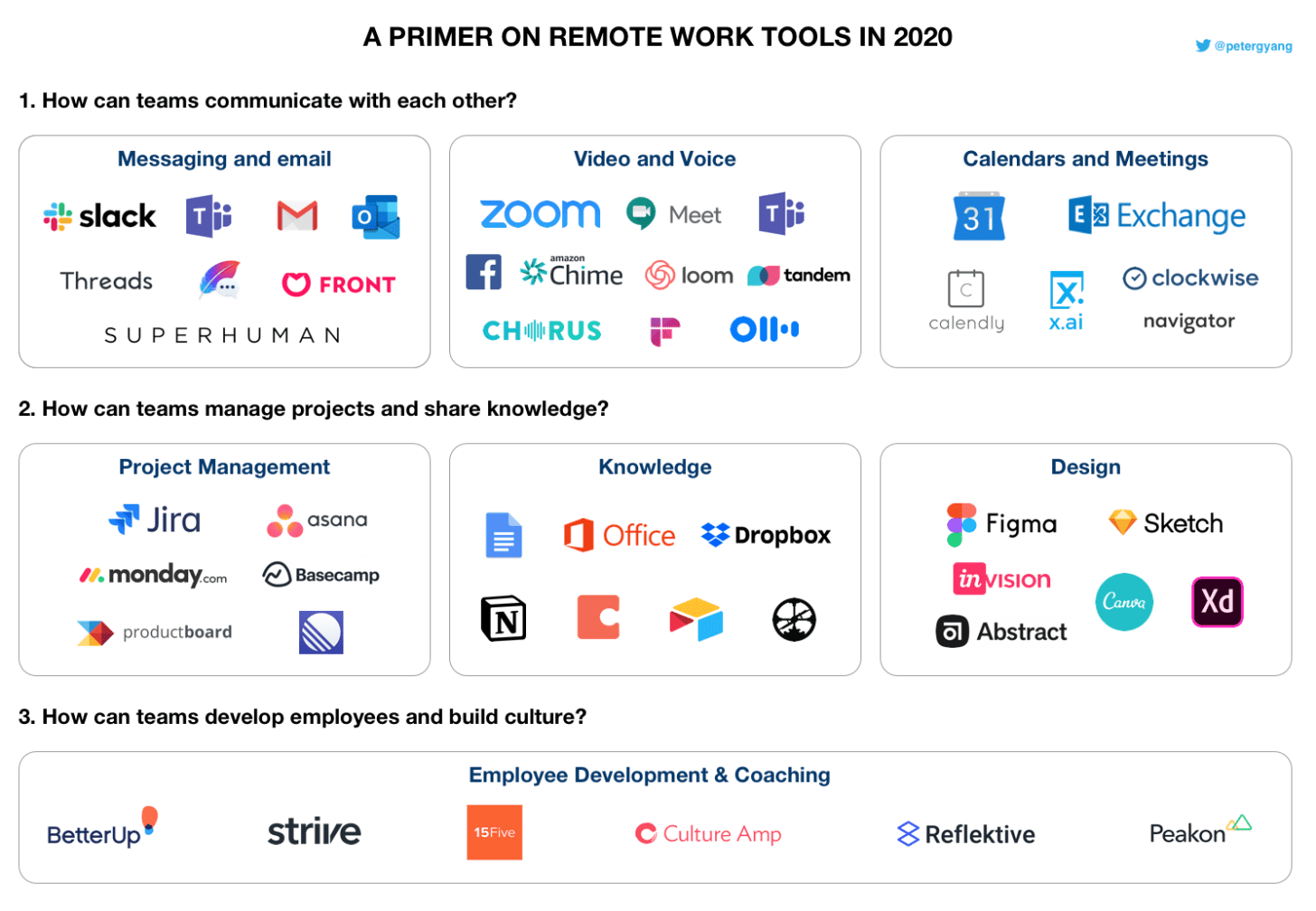The impact of COVID-19 meant, as Hannah Storm, Director of the Ethical Journalism Network has pointed out, that “news organizations had to reinvent decades of working practices in days.”
One obvious manifestation of this was the move to working from home, with many distributed newsrooms being established overnight. And since the COVID crisis showing no signs of ending any time soon, this new way of working will likely continue for some time. At many outlets, this may just become standard journalistic practice.
“The coronavirus crisis will eventually end, but the distributed newsroom is here to stay,” predicted Tom Trewinnard, a co-founder and chief operating officer of the digital journalism consultancy Fathm, in April last year.
If that’s the case, what are the key considerations for newsroom leaders and journalists?
Here are seven strategic areas and lessons to focus on:
(1) Recognize that there are many technical challenges
Lockdowns and stay at home orders meant that the shift to remote working happened quickly. Inevitably, this meant that many challenges emerged that included a range of technical and people-based considerations.
Technical issues included: access (internet, equipment, power), specialist equipment (cameras, editing software etc.), unexpected financial costs and space considerations.
As I discovered in my recent report for the Thomson Reuters Foundation on the impact of COVID-19 on Emerging Economies and the Global South, for journalists in developing countries, a recurring challenge was the reliability of home internet connections, as well as the unanticipated costs associated with remote working. These costs sometimes came on the back of salary cuts, or fewer freelancing opportunities.
As one journalist in Zimbabwe explained:
“There was a time when I would work from home and this posed a great challenge… in terms of internet issues these include exorbitant data charges and a poor network. COVID-19 also affected my income which was cut by almost 50%.”
(2) People challenges are just as numerous
Asia Alvarez Zeller an education reporter at the Lake Oswego Review in Oregon, explained to me recently how — at the start of the pandemic — both she and her husband were working from home, which at the time was a studio apartment. This meant that if they both needed to be on a call at the same time, one of them had to retreat to the closet.
Others have had to share their work space with their children, pets and roommates, leading to inadvertent Zoom bombing and other interruptions.
More widely, other complexities that many journalists and their newsrooms had to contend with included addressing issues related to workflows, tools, technology, training, management, newsgathering and engagement — both with each other and their audiences.
For my students, graduating in the middle of a pandemic, this has meant completing internships or starting full-time jobs without ever setting foot in the office or meeting their colleagues face-to-face. Onboarding, allocation of assignments, feedback and all other aspects of their work have been completed entirely remotely.
[Read more: Juggling parenting and journalism during the pandemic]
(3) Collaboration is key
Against this backdrop, work culture is crucial. Remote collaboration may mean using new tools and developing new habits.
Some of the most obvious manifestations of this have included: storing your work on the cloud, ensuring that you provide clear language/instructions to your peers and team, embracing chat and messenger apps (like Slack) to improve internal communication, and using tools like Google Docs and video editing software that are purposefully built for collaborative working.

As one news editor in Sri Lanka told me, “Working from home has been the biggest challenge as it was something I had never done before. It was both a challenge and a good learning experience.”
Collaboration also extends beyond your colleagues to your sources too, as the opportunities for face-to-face engagement have diminished. For sources in rural environs, this may create challenges around digital access and tools. Across the board, protecting sources — and the need for information security — has become more important than ever.
[Read more: Tips for project managers with remote teams]
(4) Be intentional
This is a complex space with a lot of tools, which can be bewildering for some people. Last year, most newsrooms were moving quickly, and didn’t have the luxury of testing and discussing which tools to use and why.
As we move forward, and the transition to distributed working becomes more intentional, there are opportunities to make more considered choices, in terms of the tech being used and the people for whom this method of working is best suited (or not, as the case may be).
Research from other industries — lessons that newsroom leaders should familiarize themselves with — point to a wide range of benefits of distributed working, including cost savings for employees, greater job satisfaction, increased retention and reduced sick leave, as well as potentially increased productivity (although potentially less creativity).
(5) Ask: What do we lose when physical newsrooms disappear?
Last summer, Quartz laid off staff and closed physical offices in London, San Francisco, Hong Kong and Washington. In August, Tribune Publishing disclosed it would be closing the physical offices of five newspapers, part of an ongoing trend at multiple publishers to reduce physical overheads and unlock the cash value of these assets.
As I noted in a report for What’s New In Publishing: “The move led to ruminations on what would be lost, including a physical presence in their communities, newsroom mentoring and face-to-face engagement with colleagues.”
The community aspect of this is, I believe, an important one — especially for local newsrooms. At a time when trust in the media remains low, a physical shop window is an important reminder of your place — and level of investment — in a community.
This building has been @orlandosentinel’s home since 1951 and now we’re leaving, thanks to @tribpub — which has $80.5 million in cash btw. We’re still a newsroom, even if we don’t have a home, but this is why we need local owners who care about journalismhttps://t.co/Ahzp07fb2Q
— Sentinel Guild 🍊 (@OS_Guild) August 13, 2020
(6) Embrace the positive
For all of these challenges, it’s worth noting that the move to distributed working has potentially created some positives. Journalists have had to learn new skills, tools and ways of working, and some outlets have embraced lockdown-life by building new revenue streams, such as virtual events.
More widely, the pandemic has also shown that geography need not be an impediment to hiring.
That’s a trend that I hope will continue, enabling the sector to be more inclusive in terms of its workforce, opening the doors for more women, part-time workers and those with caring and familial responsibilities.
Newsroom leaders also need to recognize that after working remotely for a sustained period of time, the need to cut costs, coupled with the desire of many employees to continue to be able to work from home – or enjoy more flexibility in the location of their work – means that the future is inevitably distributed, driven by a mixture of financial and personnel considerations.
(7) Mindfulness matters
Lastly, one of the most welcome by-products of the pandemic has been a greater willingness, in some quarters, to talk about mental health.
One aspect of distributed working, as Ivana Jeremić from Balkan Insight and Maryia Sadouskaya-Komlach of the Russian Language News Exchange, have stressed, is the risk of burnout, not least because of the blurring of boundaries between work and home life.
This is a conversation which has been long overdue, and it shouldn’t have taken a pandemic to inspire it.
Identifying, and creating, a work culture which acknowledges mental health and puts strategies in place to address the mental wellbeing of your staff is imperative in an era of prolonged social isolation.
—
Post-COVID, the extent to which they remain in place will vary from newsroom to newsroom, journalist to journalist, but one thing is clear: the genie is out of the bottle. The distributed newsroom is here to stay.
Damian Radcliffe is the Carolyn S. Chambers Professor in Journalism at the University of Oregon, a fellow of the Tow Center for Digital Journalism at Columbia University, an honorary research fellow at Cardiff University’s School of Journalism, Media and Culture Studies, and a fellow of the Royal Society for the Encouragement of Arts, Manufactures and Commerce (RSA). He also hosts the Demystifying Media podcast, in which he interviews leading journalists and media scholars about their work. Find him on Twitter.
Main image CC-licensed by Unsplash via Chris Montgomery.


